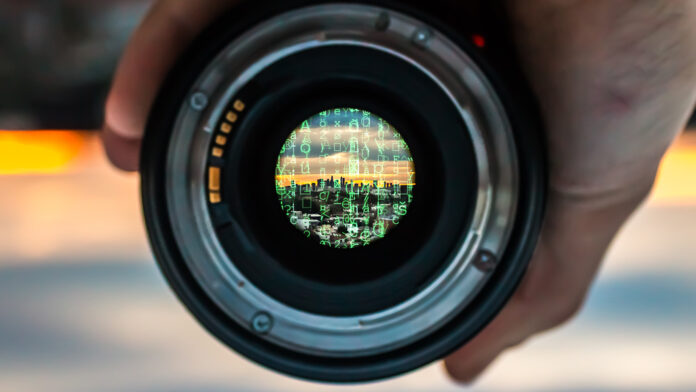In a nutshell
- AI’s power lies in its ability to process vast amounts of data efficiently, but its true strength is in augmenting human capacity, helping people accomplish tasks more independently and effectively.
- For video creators and creative professionals, AI tools can save significant time on tasks such as scriptwriting, audio mastering and video editing.
- Despite technological advancements, the creative process still requires a human touch; AI tools enhance creative abilities but cannot replace the vision, direction and storytelling prowess of human artists.
Artificial intelligence is the next significant technological frontier. With all the buzz surrounding all the AI engines and new tools available — ChatGPT, Dall-E, Midjourney, etc. — it’s a frontier that creatives and studios are charging toward. Along the way, we’re witnessing new techniques and ideas materialize so rapidly that we’re barely prepared to address the technological facets, let alone the philosophical and psychological.
Where the power lies in AI technology
For all the excitement about what AI could bring, we’re still at a point where the power of AI resides in people’s capacity to do more independently. This idea is at the core of the Institute for Experiential AI, part of Northeastern University’s AI initiative. Their motto, “AI with a human in the loop,” ensures the ethical issues of AI are tackled directly in AI solutions creation.
In a quick primer, AI’s strength lies in its capacity to process massive amounts of data more efficiently than humans. Feeding AI the correct data type is crucial in establishing a proper pipeline for effective AI use. This makes AIs excellent at data prediction, repeating simple concepts and making quick work of menial tasks. ChatGPT, likely the most famous AI as of this writing, is a generative AI that uses large language models to generate text. Essentially, it’s a database of words. Meanwhile, Midjourney, an image-generating AI, creates and manipulates images and photos on demand.
Despite all this new technology, the central questions remain:
What does this mean for individuals, particularly video creators and creative professionals?
A brave new world for video creators
In short, an AI engine can help you write scripts faster. It can also quickly gather data, make informed predictions and decisions and save editors time on edits. However, it can’t create a video, like a commercial, out of thin air. Not yet. And even if it could create a flawless commercial entirely on its own, it’s more a conglomeration of past commercials. This doesn’t guarantee future success. If you doubt that, see the “Pepperoni Hug Spot” or recent AI-generated beer commercials that lack basic human physiology.
Some suggest viewing AI as a “stochastic parrot.” This views AI as a tool that will provide data results that are closer to being correct without understanding the value of what it’s giving to you. For example, AI can produce a grammatically correct sentence or word set, but it will lack the meaning behind those words. This is where the human aspect comes into play. People edit the work of AI, giving meaning back to the words. Ultimately, it enhances the capacity of a single person. It can help an editor key a scene, needing just a few final tweaks at the end to ensure accuracy. The saved time here can be a game changer in many aspects of creation and multimedia.
This seems particularly relevant with the 2023 Hollywood writers’ strike. Besides pay rate, studios’ use of AI tools for scriptwriting is a major concern. Whether studios agree or not, the coming wave of AI-generated scripts will allow for writing and editing scripts in faster and more meaningful ways. A writer will be able to “punch up” content much faster than the traditional process alone. Many artists are now beginning to worry about adapting to new tools.
Tools for video creators
For video creators, tools like Wave’s Clarity VX rely on AI to eliminate background noise and enhance primary audio for interviews. eMastered also aids with mastering audio for albums and music, using filters that mimic popular hits. Wonder Dynamics inserts, lights and chroma keys CG characters into scenes with a mouse click. This saves days or even months of work for artists. Autopod creates quick podcasting edits based on the video microphone selection to streamline multicamera editing. Murf generates AI voice-overs that offer tools to enhance stress on syllables. Adobe even uses an AI in its transcript tool, which provides a near-perfect transcript of videos directly in Adobe Premiere Pro. Adobe is also rolling out image generation in Photoshop, enabling people to quickly correct or enhance photos.
There is a multitude of other tools taking shape. And they all can save time for creative professionals. These tools don’t eliminate the need for artists. Instead, they empower you to accomplish weeks or even months’ worth of tasks and edits in a matter of days or hours.
The creative process still needs artists
Artists will gain more control and command over their tools, and new toolsets will enhance their creative abilities. Human touch is still required at the heart of creation, and the “human in the loop” ensures the vision is articulated as it needs to be. You still need a person to finalize the script, film the video, create the base audio, select the loops and dictate what the media, direction and creative process will look and sound like. The near-perfect transcript isn’t entirely accurate and requires someone to review it. However, you can accomplish these tasks with fewer people and in less time. This is good news for independent creators with limited budgets. At the same time, it impacts those in the industry who are constantly buffeted by change and developments as the industry evolves. The shuffling of effects studios, the development of new tools and the rise of new techniques have been constants in some creative industries as the popularity of certain types of movies has grown.
AI will continue
The reality is that AI will continue to develop and advance. This prospect may excite smaller creators looking to accomplish a multitude of tasks much quicker than before. Conversely, larger shops may feel threatened by the potential reduction in workload. Yet, the nature of video creation and multimedia business is inherently tied to the expanding field of technology. When DSLRs emerged, videographers rejoiced because it allowed them to capture cinematic video at a lower cost. The introduction of non-linear editing systems like Premiere and Final Cut Pro was warmly welcomed. It allowed instantaneous timeline editing and rendered traditional film cutting nearly obsolete. Remember when cameras had just one memory card slot? Today, they often feature two or more, along with backup options, to ensure proper recording.
As we continue developing new technologies and techniques, they become integral to the evolution of technology and creativity. We strive to create more magical content, tell richer stories and provide broader access to tools that enable everyone to share their unique vision. As we continue to develop new technologies and techniques, it’s part of the evolution of technology and creativity as we strive to produce more magical things, tell greater stories and increase access to tools that allow everyone to express themselves.
It’s a bold and brave new future, one that we’ll have to continually adapt to and learn from as we grapple with the new ideas transforming our world. Only time will tell how these advancements will improve our lives and how we will employ these new storytelling tools in our productions.








